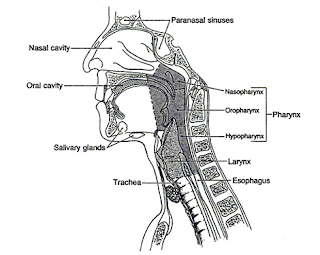Singing Tips: 1
 The lungs push air up through the trachea
The lungs push air up through the trachea- The vocal fold sits in the larynx on the top of the trachea and vibrates the air to create the fundamental pitch as well as harmonics that color the tone
- The sound produced by the vocal fold then moves along with the air into the pharynx and the oral cavity where it begins to resonate, which reinforces the harmonics present in the tone
- The jaw, tongue, teeth and lips shape the sound into vowels and consonants
- Good singing starts with solid, consistent air pressure from the lungs
- The vocal fold must be relaxed and low in the throat so it can vibrate freely and create a pleasant sound
- The pharynx and the oral cavity at the back of the mouth must be opened fully to resonate, which provides the voice's volume and a warm ringing tone
- The jaw, tongue, teeth and lips should only be closed enough to enable good enunciation
 The lungs push air up through the trachea
The lungs push air up through the trachea